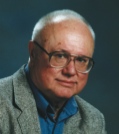
Chinglish to English: My Chinese adventure
February 2, 2009
By
Dick Morley
 China is in the throes of change. Many years ago, I visited Beijing, and when I was there, we tried to land, I thought, in a farmer’s field. Not so. They just didn’t turn on the electric lights in the airport at that time. This was a decade or so ago when electric power was in short supply.
China is in the throes of change. Many years ago, I visited Beijing, and when I was there, we tried to land, I thought, in a farmer’s field. Not so. They just didn’t turn on the electric lights in the airport at that time. This was a decade or so ago when electric power was in short supply.
Times have certainly changed. When I travelled there recently, I was greeted by a modern, bustling city and an airport with bright lights. Our trip was part business and part vacation. The vacation part was my bride’s responsibility. She had to run around and see all of the sights, while I was there to celebrate the anniversary of the Modicon PLC.
On the way to China, I stopped off in Silicon Valley for a semiconductor keynote on the future of semiconductors in automation. That will probably be the subject for a future column. Then it was off to Tokyo for a plane change to Beijing. Travel was very nice this time, considering that travel, for me, is usually a little awkward. I am handicapped with a bad right knee (I’ve had three knee replacements — two on the right leg), so wheelchairs are needed for each landing and takeoff. The airlines, however, do a good job. The wheelchairs are ready and there were no problems at any time during the 12-day journey.
Our hosts (Schneider Electric) deserve kudos for their wonderful help. The only real hiccup, however, was the language barrier. More specifically, it was with a language called Chinglish — a corruption of the words Chinese and English.
Most of the engineers spoke good English. The students, however, were another story. My first talk was at the premier Tsinghua University in Beijing. All of the students understood me and could read and listen well, even with my New England accent. But when it was time for audience questions, I couldn’t understand them, even though all of the words made sense to me. Chinglish is what results by transliterating Chinese character definitions and assigning the English definition. But when you do that, you have to change to English grammar as well. Not so for Chinglish; they keep the Chinese grammar. Here are some results I stole from the web: “Deformed man toilet” is what comes out when trying to translate “handicapped restroom”; “Strange juice” might appear on a menu, and it means “kiwifruit juice”; “Wash after relief” might be a sign you see in a public washroom.
Keeping that in mind, you can see why it was difficult to understand questions. In fact, when I was asked about automation, the questions from the audience were undecipherable. I could not translate or understand them. Mike, my translator, had to take the students’ Chinglish and reform the sequence and the inferred definitions for my American ears. We did okay.
The people were gracious, considerate and helpful. Most had two questions: what is my life like, and what is the future of automation. They were most curious about the innovation process and my sleeping schedule. The students were astounded that I slept only four hours a night and compensated for this “lack of sleep” by taking several naps during the day.
Innovation was the general theme of the conference. I was surprised that most students believed the innovation process involved directions from the leader and had to be done in a large company. Few believed that I detailed the PLC invention first and then formed a company to bring it to market. The statistics I quoted for the process of innovation were hard for the audience to accept, both for the students and the managers. As an example, our investment portfolio has only a 20-percent winner rate and takes about seven years for each investment to mature. The patent innovation rates overall are even more surprising. Of the top one percent of patents developed, 80 percent come from small companies and individuals, and the rest come from large companies. If you rationalize the per capita contribution, invention and innovation come from people, not organizations. This does not mean that companies abandon the innovation process, but companies should realize that it takes a long time and seldom happens.
I asked all students that were interested in innovation to raise their hands. At first, none did. I demanded that one student, somewhere, stand up. Finally, one sweat-shirted, smiling person did — my type of fan. And then others began to slowly stand. I felt like I was a preacher at a church meeting. Then we had aggressive questions and interaction. All in all, it was a super ending to the day.
By the way, I had to define innovation for them. Engineering is solving problems, while innovation creates problems. Innovation is managed by using unstructured collaboration.
We discussed the future of technology, particularly in SCADA, the next PLC, wireless, sensing and data reduction, systems, training, cars and energy. The exchange with the attendees fueled my talks and I enjoyed myself immensely.
To top it all off, the food was great (the Peking Duck was excellent), and Shirley, my bride of 50-plus years, finally got to see the Great Wall of China. A good time was had by all.
Dick Morley is the inventor of the PLC, an author, speaker, automation industry maverick and a self-proclaimed ubergeek. E-mail him at morley@barn.org.